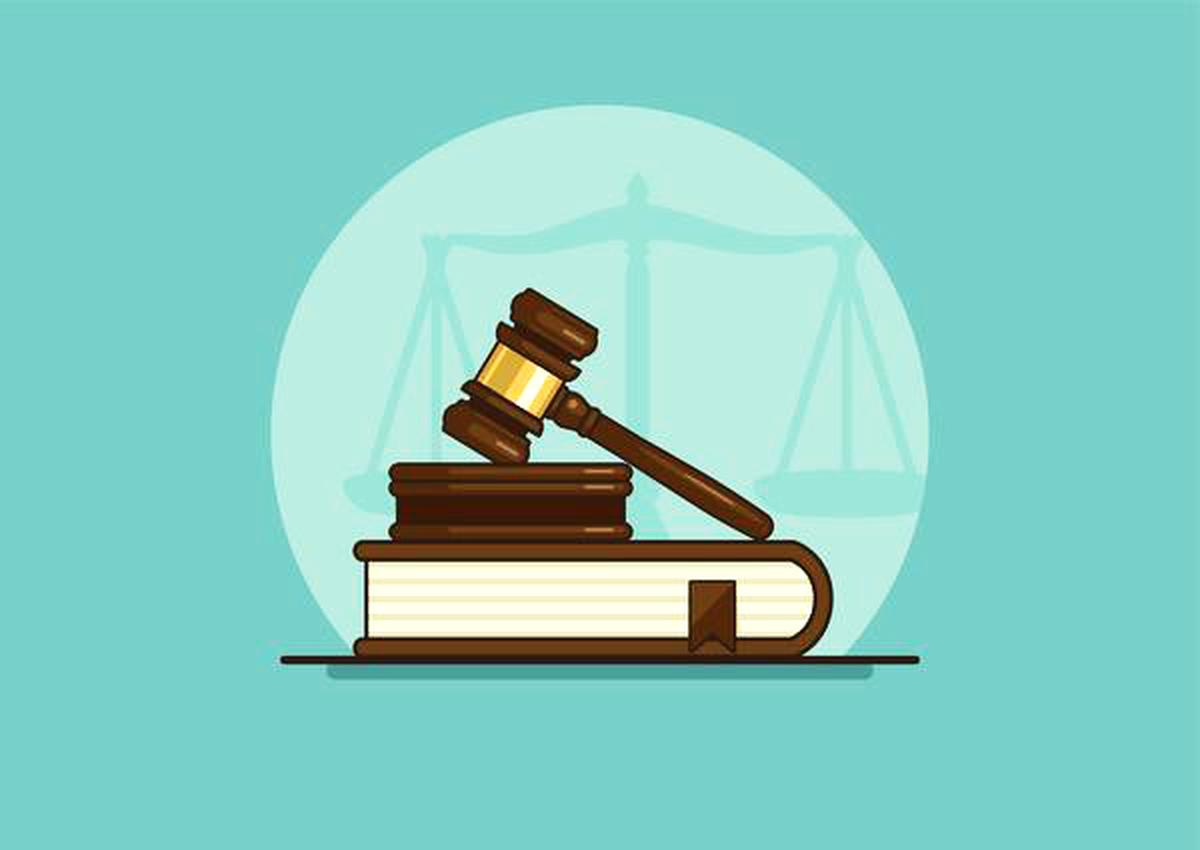What Is the Difference Between Collegium and NJAC, and Why Is the Government Imposing NJAC on the Judicial Branch?Look inside for all the details.

India’s Collegium System is in charge of designating and removing judges from the judiciary, and the Supreme Court (SC) of India’s rulings led to the development of the Collegium system. This organisation, unlike others, was not established by a parliamentary act or a constitutional clause. The present judges are authorised to designate new judges to the courts under the collegium system. The NJAC was created to address the Collegium System’s mistakes. The NJAC is the organisation in charge of appointing and transferring judges to the country’s higher levels of the judiciary.
What Is the Collegium System, Exactly?
In India, the collegium system is in charge of selecting new judges and reassigning judges who have already been appointed. Judges choose other judges in the collegium. The Supreme Court decisions known as the “Three-Judges Cases” serve as the cornerstone of the collegium system. In India, a system or organisation is either formed by a law enacted by the Parliament or through provisions included in the nation’s Constitution. But the Collegium System is unique in its field. Its beginnings are due to the judgments listed above.
The Supreme Court Collegium is made up of the Chief Justice of India and the four SC justices with the most seniority. The High Court Collegium is made up of the four seniormost judges of the HC and the Chief Justice.
The Supreme Court Collegium receives the applicants for first approval from the High Court Collegium. The agreement of the CJI and the SC Collegium is required before the names are forwarded to the Government of India. However, if the Collegium reiterates the names, the GoI is obligated to approve the request and certify the appointment of the people. The GoI has the option to send the names back for more review.
The approach was implemented to strengthen the court’s appointment procedure and maintain the judiciary’s maximum level of independence. One of the most crucial foundations of democracy is an independent judiciary. Five new Chief Justices of High Courts will be appointed soon, according to the names recently submitted by the Supreme Court Collegium. There have been various rumours about the Collegium System for a time. The Collegium’s mechanism for selecting judges has been supported by Chief Justice of India NV Ramana, who claims that the procedure is as transparent as it can be.
Development of the Collegium System
The Indian Constitution was approved on January 26, 1950, and following its provisions, the Chief Justice of India was chosen by the President of the nation, and the Supreme Court judges were chosen after consulting the CJI. The following steps contribute to the creation of the Collegium:
CJI’s Nomination (1950–73)
Both the nation’s administration and the CJI were in agreement with one another. A convention was established for the selection of the senior Supreme Court justice. As Justice AN Ray had replaced three more senior Supreme Court justices, the nomination of AN Ray as the CJI in 1973 broke this tradition. When a new CJI was appointed in 1977, after one of his seniors had been replaced, this infringement was once again noted. These offences led to a conflict between the country’s judicial and executive branches.
First Judge’s Case (1982)
A petition that would subsequently be known as the S.P. Gupta case or First Judges case was submitted to the Supreme Court in 1982. One of the two primary themes discussed during the case’s proceedings was how the phrase “consultation” in Article 124 defines the appointment process. The Supreme Court rejected the notion that implied agreement in meaning.The SC’s consultation was not required for the president to make his decision. The Supreme Court ruled that the High Court justices may be transferred from one state court to another, even against their wishes.
Second Judge’s Case (1993)
The Supreme Court Advocates on Record Association filed another petition with the Supreme Court in 1993. (SCARA). The SC overturned the previous decision and changed the definition of “consultation” to “concurrence,” making it mandatory for the President to contact the CJI before appointing judges. The Collegium System was created as a result of the prior decision being reversed.
Third Judge’s Case (1998)
In 1998, a fresh discussion about the phrase “consultation” was launched in response to references to the Supreme Court in Articles 124, 217, and 22 of the Indian Constitution made by the President. The Chief Justice of India will not be the only person involved in the consultation process; there will also be a collegium made up of four of the Supreme Court’s most senior justices. The Chief Justice of India cannot offer recommendations to the government if there is even a two-judge disagreement. The Collegium System of India was created as a result of the following rules for the nomination of judges
The Collegium system in India
The Collegium would provide recommendations to the Central Government for the appointment of judges. The Collegium may also accept candidates for a recommendation from the federal government. The appointment procedure takes a long time because no time limit is set.If the central government sends the Collegium’s recommendation back for reevaluation but the latter makes no changes to it, the central government will have to contact the Collegium.
Numerous times, the collegium system has been criticised for lacking transparency and accountability, as well as for issues with nepotism that weaken it. Both civil society and the government have criticised it. Due to this criticism, the 99th Constitutional Amendment Act of 2014 created the National Judicial Commission Act (NJAC). The Collegium System was intended to be replaced by the National Judicial Appointments Commission (NJAC).
National Judicial Appointment Commission (NJAC)
The NJAC is a body that the NJAC bill proposed, and its contents would have followed Article 124A of the Constitution. The NJAC would have had the executive’s participation in the selection of the judges.
The Collegium System has drawn a lot of criticism, and as a result, provisions have been made to correct these flaws. The National Judicial Appointment Commission (NJAC) enters the scene in this situation. The NJAC was intended to take over the role of the Collegium and was established by the NJAC Bill. According to the system, judges for the SC and HCs would be chosen by a commission for judicial appointments, with input from the Executive. Article 124A of the constitution included provisions for the establishment of the NJAC.
The members would have been
- The Indian Chief Justice (ex-officio, Chairperson of the NJAC)
- Two senior judges of the Supreme Court (ex-officio)
- Justice and Law Minister of the Union (ex-officio)
- Two prominent individuals will be picked by a certain committee.
People outside of the judiciary would have a voice in the judge’s nomination.
Collegium System
Since the Three-Judges Cases gave rise to the Collegium System and it evolved from them, it has been in existence. The Constitution doesn’t address it. The Collegium does not meddle in this way. To preserve the judiciary’s independence, it was sought to keep the executive separate from it.
The SC Collegium’s members are:
- The Indian Chief Justice
- Four senior judges of the Supreme Court
The HC Collegium’s members are
- The High Court’s Chief Justice
- Four senior justices of the High Court
Why was the NJAC Act struck down?
A five-judge panel made up of Justice Madan Lokur, Justice J.S. Khehar, Justice Adarsh Kumar Goel, Justice Kurian Joseph, and Justice Jasti Chelameshwar rendered a 4:1 verdict that rejected both the NJAC Act and the 99th Constitutional Amendment Act. Due to the NJAC Act’s interference with the independence of the court, it was deemed unlawful and abolished.
A five-judge panel commonly known as the Fourth Judges Case decided to overturn the NJAC Act in 2015. Despite pointing out that the collegium system is inaccurate and that the procedure of “judges nominating judges” should be looked into, the five-judge bench concluded that the collegium method will continue to be used in the nomination of judges.
In addition to each judge’s distinct ratio decidendi, each judge also provided a detailed justification for their decision. The fundamental argument of each of their rulings was that the legislature and administration should refrain from participating in the selection of judges and maintain the judiciary’s independence from them.
Honorable Justice J.S. Khehar believes that “civil society’s organic evolution has not yet sufficiently evolved.” Justice Chelameswar took a different approach, noting that “the court cannot be the only constitutional authority capable of preserving the people’s liberties.” Justice Khehar was supported by the other justices.
Justice Khehar explicitly questioned the NJAC Act’s viability and addressed important issues. The NJAC Act was criticized by Justice Khehar on the following grounds:
The engagement of the legislature in the selection of judges may lead to the development of a culture of “reciprocity”. Justice Khehar used the term “reciprocity” to describe a situation in which political factors may affect the selection of judges and judges would feel as though they had to repay the political administration in order to be selected to the position of judge.
Justice Khehar also made a strong case for how it is impossible to expect future judges chosen by NJAC to be unbiased if the Union Law Minister is a member of the committee that approves such nominations. The Chief Minister, Prime Minister, or any other minister from the opposition are regularly involved in issues brought before the judiciary, Justice Khehar explained, making it very questionable for the Minister of Law and Justice to participate as an ex-officio member of NJAC in such situations.
The NJAC Act would violate the guarantee of judicial independence provided by the current collegium structure. The judiciary’s exclusive responsibility for selecting judges is enshrined in the Constitution’s fundamental design. The NJAC Act gives the Prime Minister, the leader of the Lok Sabha, and the Chief Justice of India the discretionary authority to select two distinguished individuals for the NJAC body.
The use of the veto authority raised significant concerns from the two key people. According to Justices Khehar and Lokur, these two people “may collectively strike down an otherwise legal appointment.” They raised concerns about how these two people would be terminated if it became known that they were misusing their power.
Justice Jasti Chelameshwar spoke out strongly in favour of the NJAC Act, whereas Justice Madan Lokur, Justice J.S. Khehar, Justice Adarsh Kumar Goel, and Justice Kurian Joseph considered the Act to be unconstitutional. He deemed the NJAC Act to be wholly legitimate and constitutional. He believed it to be an ideal replacement for the current collegium structure. The advantages of the NJAC Act were outlined by Justice Chelameshwar in a vehemently written dissent ruling.
Justice Chelameshwar believes that a key element of constitutional government is transparency. It becomes significantly more important as the appointment process progresses, he reasoned. Justice Chelameshwar praised the NJAC Act for establishing a simple and open process for appointing judges. He openly noted that the collegium system lacks transparency because the general public is unable to see its sessions.
He agreed with Advocate General Mukul Rohtagi’s contention that the Constitution’s fundamental design is destroyed when the checks and balances element is excluded. The checks and balances concept is upset, according to Justice Chelameshwar, when the government’s involvement in selecting judges is excluded. He continued by saying that the executive cannot be eliminated in a democratic system.
The United States of America was used as an example in the dissenting order, where the President of the Executive Branch is granted the authority to choose justices. The Law Minister should be included in the panel, according to Justice Chelameshwar, who said that the executive branch is capable of making significant and useful contributions to the selection process due to its extensive administrative infrastructure.
Present collegium system problems
Despite the fact that NJAC was declared unlawful and illegal and was overturned, the new system is not without flaws.Even as it invalidated NJAC, the bench stated that the system of “judges appointing judges” is incorrect and needs to be reformed. The collegium system was founded 29 years ago, and no better successor has been found. The following are the key issues with the collegium system:
The collegium method increases the likelihood of prejudice because it doesn’t offer any rules or procedures for choosing Supreme Court justices. The collegium system has no constraints on candidates being interviewed or having their backgrounds verified. Concern should be expressed about the absence of an administrative body since it suggests that the collegium system’s participants cannot be held accountable for selecting any of the judges. The “Second Judges Case” demonstrated the superiority of the judiciary over the executive. This setup violates the check-and-balance principle. Because it ensures that no branch of democracy abuses its power, the check-and-balance concept is crucial.
NJAC was ruled invalid and overturned, but a closer look at the collegium system shows that, while not being mentioned at all in the Constitution, it has evolved through time as a result of several previous judgments. How the collegium mechanism works is unclear. Nepotism has been prevalent in the legal system as a result of the absence of rules for hiring judges. Because of the biases inside the legal system, nepotism produces mediocrity. Nepotism has been prevalent in the legal system as a result of the absence of rules for hiring judges. Because of the biases inside the legal system, nepotism produces mediocrity.
After examining both the NJAC and the collegium system, it can be concluded that neither one is perfect nor that both are missing certain key components. The collegium system has drawn criticism from the Minister of Law and Justice (Kiren Rijiju), who said that the procedure lacks transparency and “does not justify the least goal with which the provision was inserted in the Constitution.” The Law Minister added
that the NJAC has the backing of several former judges and legal professionals. Legal scholars are divided on the NJAC, with some in favour and others advocating for changes to the Act.
It is clear that neither the NJAC nor the Collegium system is perfect; both have certain flaws. There are certain actions that may be taken to modify the NJAC. NJAC must be changed to maintain the independence of the courts. The previous NJAC Act interfered with the independence of the judiciary by giving the legislative and executive branches authority. Justice Deepak Gupta contends that the group responsible for choosing judges has to include senior retired government workers.
Justice J.S. Khehar questioned the role of the Minister of Law and Justice in the committee that selects judges in the 2015 ruling. Therefore, he should be replaced on the commission by any bureaucrat or former public servant. The new system should have more openness in the selection process because the collegium system does not. The Supreme Court must establish rules for selecting justices, and those rules must be scrupulously observed. In addition, all notifications should be made public to increase transparency in the process.
edited and proofread by nikita sharma





